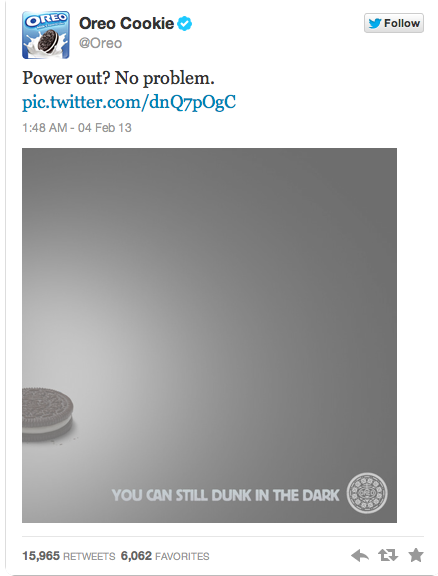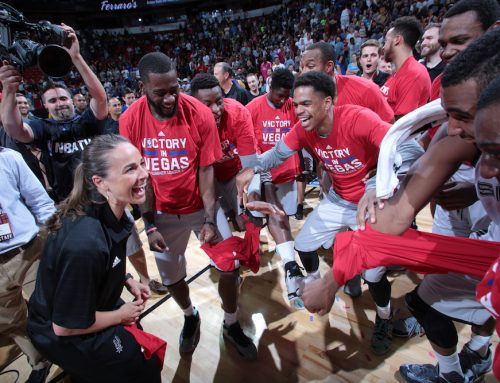via Harvard Business Review by B. Bonin Bough
Now that the Super Bowl is over and we know who won the game, everyone’s asking who won the marketing battle that surrounds it. There’s so much discussion every year about who got what spot, what they paid for it, and whether or not they should have released their commercial early. But the biggest storyline out of this year’s Super Bowl had less to do with the commercials themselves and more to do with the way that brands engaged with events and consumers in real-time.
While there will always be debate about which TV spots deliver the most ROI, one thing is certain: no matter how much you’ve planned ahead, and no matter how deeply integrated your campaign may be, there’s no better (or cheaper) way to cut through the clutter than to improvise. The idea of improvisational marketing is a dangerous one to many of the big brands that advertise around the Super Bowl, for obvious reasons. Even the slightest misstep or off-color remark can go viral and forever damage a brand within minutes. But responding to events in real-time, as they unfold, and weaving your brand into the conversation in a way that entertains and supports your brand proposition, can be the most powerful marketing of all.
Sunday’s power outage provided the perfect surprise for brands to pounce on creatively. Tide shrewdly tweeted, “We can’t get your #blackout. But we can get your stains out.” In a dig at their luxury car rival, Audi tweeted, “Sending some LEDs to the @MBUSA Superdome right now…” At MondelÄ“z International, our Oreo brand team and their agency partners sat together in a war room and came up with this gem, which has since been re-tweeted more than 15,000 times:

— Oreo Cookie (@Oreo) February 4, 2013
This was a big, albeit unplanned moment, but the beauty of real-time content is that there’s always something interesting happening in the world, and always an audience who cares about it. The ubiquity of digital technology and mobile devices enables people at far corners of the globe to share moments together, regardless of where they’re located, their economic status, or how old they are. By focusing content development around these shared cultural moments, marketers can transcend the demographics-driven targeting that has for so long defined the industry, reaching more people in a more relevant way.
We saw firsthand the power of tapping into big cultural moments when we celebrated Oreo’s 100th birthday in 2012. We produced 100 consecutive “Daily Twists,” spotlighting global cultural developments, as they happened, through an Oreo lens. Covering everything from LGBT Pride Month to the Mars Rover landing, we were able to join the global conversation with fresh content, and this timeliness nearly tripled the level of consumer engagement compared to the three months prior to the campaign.
The biggest challenge for brands that want to engage their consumers in real-time is that consumer conversations move at incredible speed due to social and mobile technologies. For large brands, making sense of that conversation requires rapidly sifting through vast amounts of data, but also making that data available across functions within the organization in a way that empowers brands to translate social insights into actions.
Only by gathering, analyzing, and broadcasting these data in real-time do organizations position themselves to deliver on a wide variety of organizational challenges. By empowering brands to make strategic decisions on the fly, companies and their agencies can execute on smarter media plays that have small windows of opportunity, such as observing earned media trends and adjusting their paid media strategies to amplify them. Just as important is that there’s a cross-functional process in place, best achieved by getting everyone in the same room, so that multiple departments can see, evaluate, and act on data and conversation they wouldn’t otherwise see.
Beyond process and proximity, the most critical point is that visualizing data tells a story and changes culture in a way that numbers themselves cannot. By giving everyone access to the same data-driven picture, you put the onus on the group to understand and act on the trends, challenges, and opportunities that emerge. This culture of listening, accountability, and collaboration is what brands need behind them to succeed in a real-time world.



